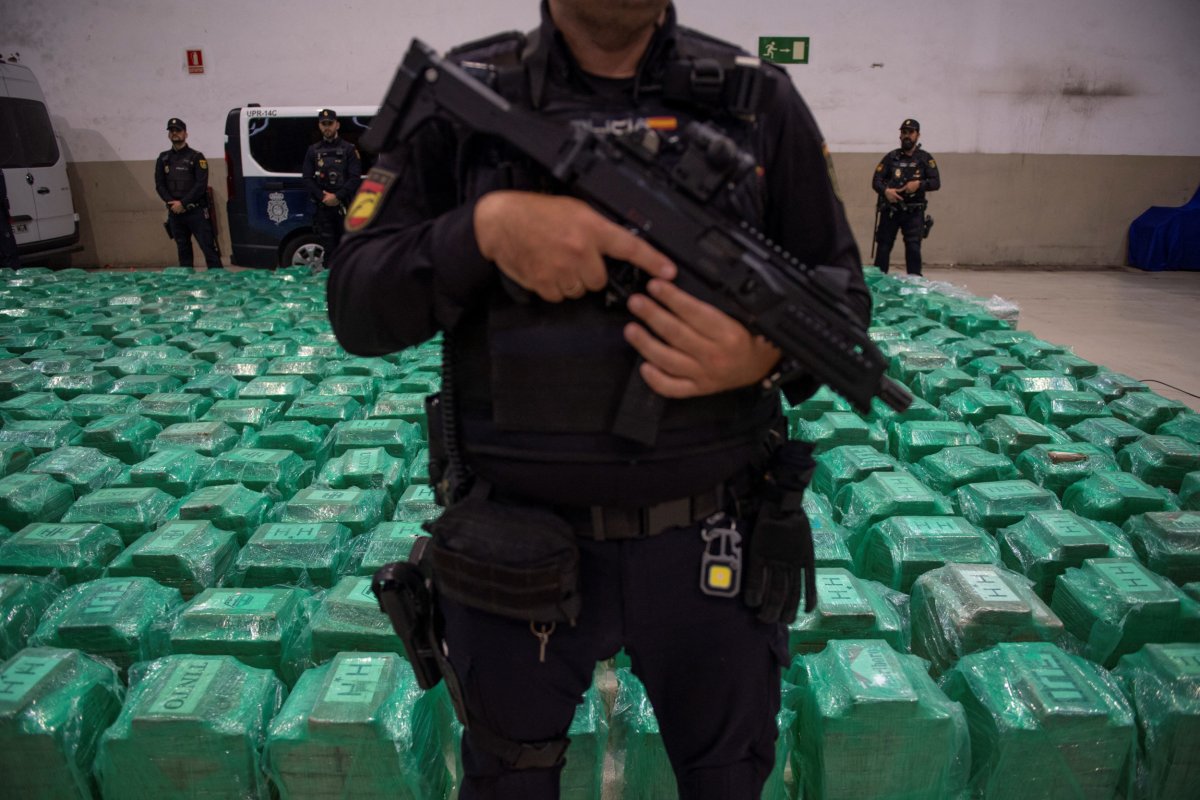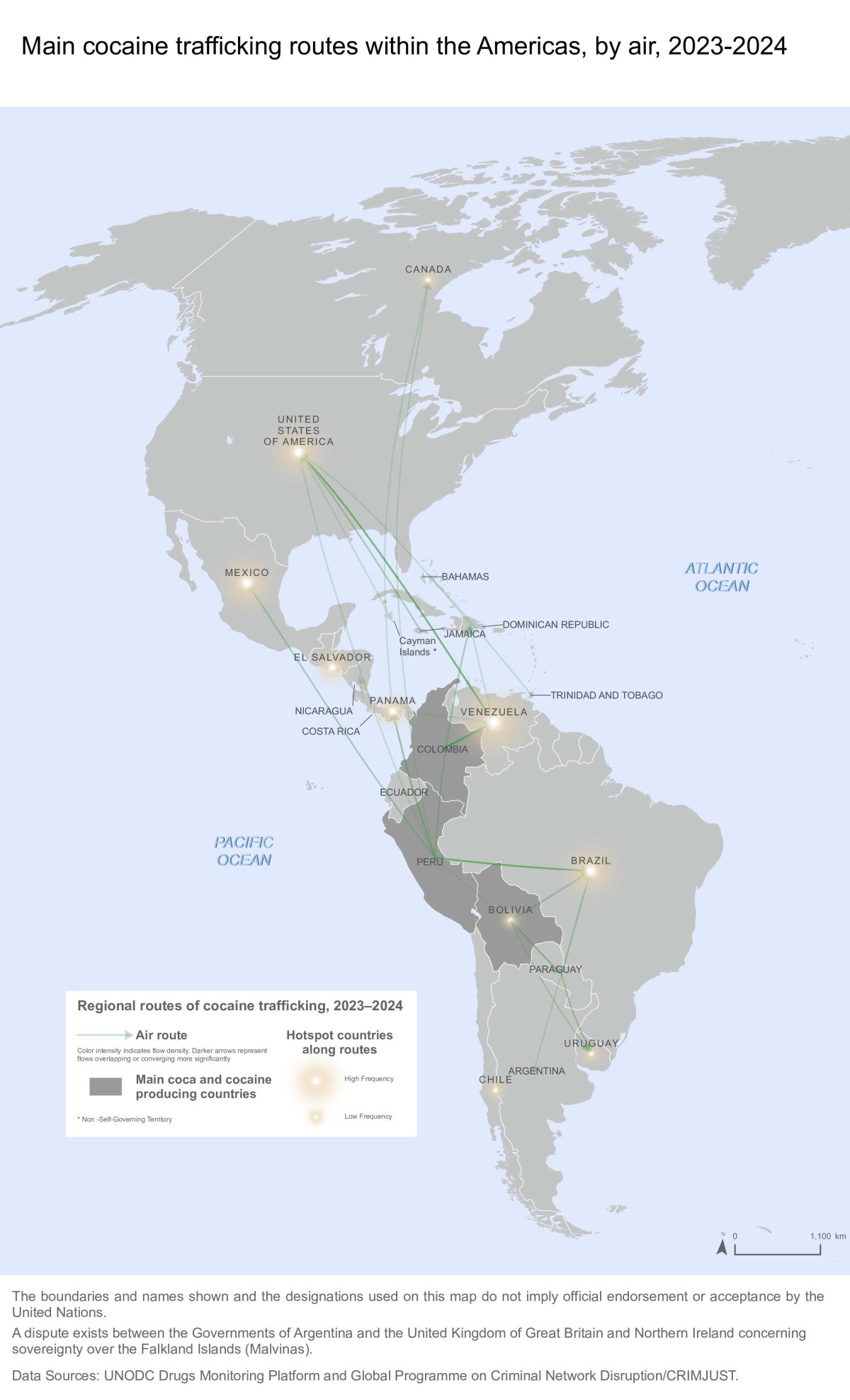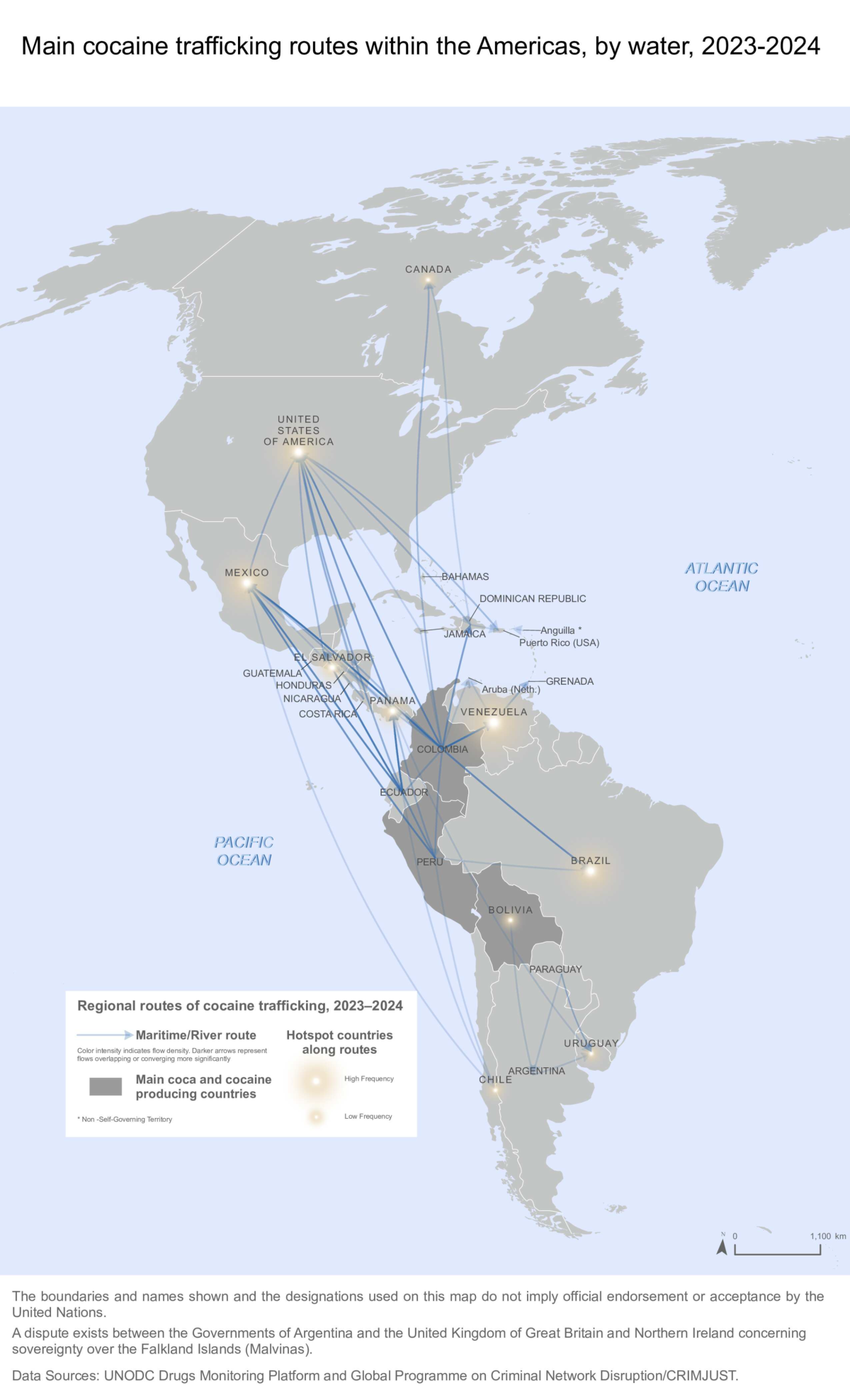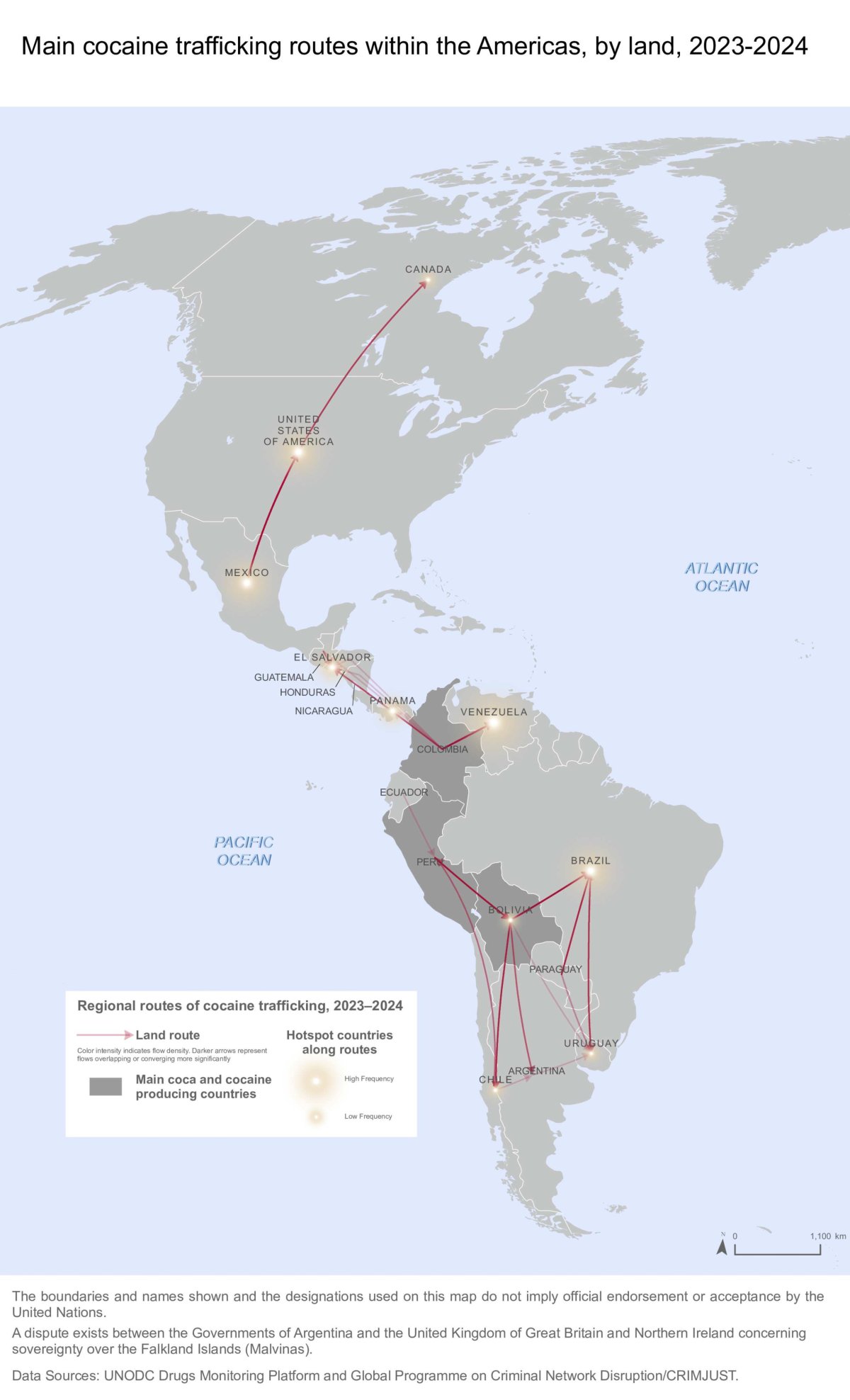Latest United Nations figures have revealed a spike in the world’s production, seizure and use of cocaine, and maps show how North America is a hub for the global trade.
The Vienna-based UN Office on Drugs and Crime (UNODC) released a report on Thursday, which said that in 2023, illegal production of cocaine increased by around one-third from the previous year.
Newsweek has contacted the UNODC for further comment.

JORGE GUERRERO/Getty Images
Why It Matters
The figures are for 2023 and, as of Thursday, have not been broken down into sub-national data, but offer a snapshot of how entrenched the cocaine market is in North America and the U.S. after years of efforts to clamp down on the trade.
What To Know
The UN released its World Drug Report 2025 on Thursday, which provided data about the narcotics trade over the course of 2023.
It said global illegal production of cocaine reached 3,708 tons in 2023, or 34 percent more than the previous year’s level of 2,757 tons.
Columbia was the source for most of the drugs that eventually crossed the U.S.–Mexico border, according to the report.
This was because the size of the area under illicit coca bush cultivation in Colombia had yielded 50 percent more product than the previous year. Production had stabilized in Bolivia and declined slightly in Peru.
The UNODC maps show how Columbia, Peru and Bolivia are the hubs for the transport of the drug throughout the continent by land, sea and air.
The main cocaine trafficking flows remain from the Andean countries in South America to North America, but also from the Andean countries to Europe, either directly or sometimes through West and Central Africa.
The number of cocaine users globally has also kept growing, reaching 25 million people in 2023, up from 17 million a decade earlier.
However, global cocaine seizures also reached a record high in 2023 across all regions, and between 2019 and 2023, there was a 68 percent rise in the amount of the drug seized worldwide.
Australia and New Zealand are now the world’s biggest per-capita users of the drug, with 3 percent of people aged 15 to 64 in the two countries using the drug in 2023, nearly double the figure in the Americas and almost three times that of Europe.

Vienna-based UNODC

UNODC

UN Office on Drugs and Crime UNODC
What People Are Saying
UN Office on Drugs and Crime (UNODC) chief of research Angela Me: “The global cocaine market is breaking records with productions, seizures, and consumption all reaching new highs in 2023.”
What Happens Next
The Trump administration has repeatedly said it would target drug cartels, and earlier this month, alleged drug traffickers accused of using “narco subs” and aircraft to transport large quantities of cocaine were sanctioned by the U.S. Department of the Treasury’s Office of Foreign Assets Control.
Following the order, Treasury Deputy Secretary Michael Faulkender said in a statement on June 6 that it would “bring our unique tools and authorities to the fight against cartels and their affiliates.”


























